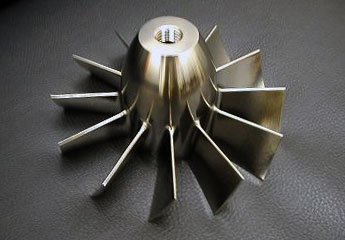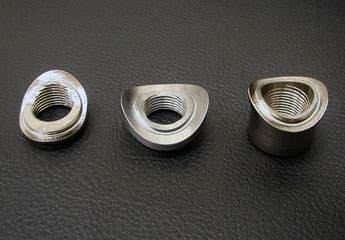Aiwa Seimitsu will proactively handle all your Inconel cutting needs.
Aiwa Seimitsu has a proven track record and expertise in processing ffdifficult-to-machine materials such as Inconel, cultivated through our experiences in machining racing components.
We also possess technology that enables us to process difficult-to-machine materials with short delivery times and at low cost by using water-jet cutting machines for rough cuts.
We will leverage this technology to expand into fields such as aerospace and medical care.
Company Name: Aiwa Seimitsu Seisakusho Co., Ltd.
Address: 3473-1 Ujiie, Sakura-shi, Tochigi 329-1311, Japan
Please fill out the form below and one of our Sales engineers will get straight back to you!
Example of Inconel cutting
 |
|
| Application | Aerospace related components |
| Matelial | Inconel 718 |
| Size | Φ120×80 |
| Precision | ±0.1 |
| Processing | ・NC lathing ・5-axis machining |
 |
|
| Application | Automotive components |
| Matelial | Inconel 718 |
| Size | 40×150×150 |
| Precision | ±0.05 |
| Processing | ・5-axis machining |
 |
|
| Application | Automotive components |
| Matelial | Inconel 718 |
| Size | Φ40×40 |
| Precision | ±0.1 |
| Processing | ・NC lathing ・Machining |
Contact us
What is Inconel?
Inconel is a type of nickel alloy that can be used under high-temperature, high-pressure conditions. The word is a registered trademark of the developer, Special Metals Corporation (formerly International Nickel Company), but is now widely used as a common noun. Inconel is a nickel-based alloy with additives such as chromium, iron, niobium, and molybdenum. Its classification is made according to the content ratio of alloying elements, resulting in Inconel 600, Inconel 625, Inconel 718, Inconel X750, and so on.
Inconel is an "Ultra heat-resistant superalloy" with particularly high-temperature strength, making it an excellent component material for plant equipment, waste incinerators, electronic equipment, aircraft engines, rocket engines, and nuclear reactors. That being said, Inconel's unique properties can also hinder processing. Without special tools and skilled techniques, it is very difficult to cut Inconel as designs require.
Inconel characteristics and features
The following are the general characteristics of Inconel.
High Strength
The specific strength of Inconel 600 at room temperature is equivalent to that of austenitic stainless steels, but the strength does not decrease when used at high temperatures. It maintains sufficient strength even in applications that operate under high temperatures for long periods of time, such as gas turbines.
Corrosion Resistance
Since Inconel is an alloy containing chromium and nickel, an oxide film forms on the surface. The oxide film prevents contact with air which is effective in preventing corrosion. Its high nickel content also makes it resistant to highly purified water and alkalis.
Heat Resistance
Inconel is a metal with low thermal conductivity, making it less susceptible to thermal degradation. It retains its strength even in high-temperature environments of around 700°C and exhibits excellent corrosion resistance up to around 1000°C. It also maintains excellent mechanical properties at extremely low temperatures too.
Oxidation Resistance
Another strength of Inconel is its resistance to oxidation at high temperatures. This property, exhibited by superalloys containing 15-25% chromium, prevents rust from occurring, thereby extending the service life of the product.
Creep Resistance
Creep resistance is a property that prevents the so-called "creep phenomenon", in which an object is deformed by continuous loading. Components made with Inconel do not distort under high temperatures, giving support to their stability and reliability.
With the above characteristics, Inconel can be summarized as "A metal that maintains stable strength even at high temperatures.”
Inconel types
Four types of Inconel are listed here, each described with their main properties and reference values for their main chemical components.
1) Inconel 600 (Alley 600)
Main chemical component reference values (Wt%)
Ni: At least 72.0 Cr: 14.0 ~ 17.0
Fe: 6.0 ~ 10.0
- Extensive corrosion resistance
- Corrosion resistance under oxidizing conditions due to chromium content
- High nickel content and good corrosion resistance against alkaline solutions
- High resistance to stress corrosion cracking caused by chlorine ions
- Very high resistance to ammonia
- Resistance to corrosion caused by dry chlorine and hydrogen chloride
2) Inconel 625 (Alloy 625)
Main chemical component reference values (Wt%)
Ni: At least 58.0 Cr: 20.0 ~ 23.5
Fe: At most 5.0 Mo: 8.0 ~ 10.0
Nb+Ta: 3.15 ~ 4.15
- Resistance to pitting and crevice corrosion even in chloride solutions
- High resistance to chloride-induced stress corrosion cracking
- High resistance to high temperature seawater and brackish water
- Resistance to oxidizing chemicals due to chromium content
- Corrosion resistance even in reducing atmospheres due to molybdenum
- Prevention of intergranular cracking after heat treatment and welding due to Niobium content
3) Inconel 718 (Alloy 718)
Main chemical component reference values (Wt%)
Ni: 50.0 ~ 55.0 Cr: 17.0 ~ 21.0
Mo: 2.8 ~ 3.3 Nb: 4.75 ~ 5.5
Al 0.2 ~ 0.8 Ti: 0.65 ~ 1.15
(Remainder contains Fe)
- High chromium and molybdenum content, resistance to pitting and corrosion at both high and low temperatures
- High resistance to stress corrosion cracking caused by chloride ions due chromium content
- Resistance to weld cracking
- Good workability after annealing
4) Inconel X750 (Alloy X750)
Main chemical component reference values (Wt%)
Ni: At least 70.0 Cr: 14.0 ~ 17.0
Fe: 5.0 ~ 9.0 Nb: 0.7 ~ 1.2
Al 0.4 ~ 1.0 Ti: 2.25 ~ 2.75
- Excellent resistance to general corrosion at both low and high temperatures
- Resistance to stress corrosion cracking
- High hardness due to precipitation hardening
- Excellent tensile and rupture strength, creep resistance, and oxidation resistance in high temperature environments
Inconel applications
The following is a list of some applications of Inconel.
| Category | Application |
|---|---|
| Plant facilities | Manufacturing equipment in chemical and food plants, catalyst regenerators and pressure vessels in petrochemical plants |
| Nuclear power | Reactor components, nuclear fuel spacers |
| Electronic devices | Component parts |
| Aerospace | Components, turbines, rockets, satellites, spacecraft, aircraft engines |
| Tools | Hot extrusion tools, molding tools, heat treatment jigs |
| Industrial equipment | Various plant equipment, heat exchangers, water treatment equipment, wellhead equipment, equipment for oil wells |
| Others | Springs, bellows, bolts |
Inconel machinability
Inconel is a very difficult metal to cut due to its properties. Metal materials that are difficult to cut due to any of the following properties are called "difficult-to-cut materials": high-temperature strength, low thermal conductivity, easy work hardening, or high affinity with tool materials.
Inconel has low thermal conductivity and chips easily adhere to cutting edges, often causing damage to the tools.
Precautions for cutting Inconel
When cutting Inconel, care must be taken in the cutting conditions and tool selection. This section discusses the optimization of cutting conditions and proper tool selection.
Optimization of cutting conditions
There isn’t as much data related to Inconel cutting compared to other metal materials, so optimizing cutting conditions is not a simple task. Control the temperature of the workpiece and adjust the rotation as well as the feed to settle on the optimal conditions for both machining accuracy and tool life.
Proper tool selection
Wear-resistant ultrafine-grained cemented carbide is the preferred tool grade for cutting Inconel. Multi-blade tools are effective for mitigating overheating of the cutting edge when cutting is performed. Using a strong torsion blade or positive rake angle may also reduce the burden on the cutting edge.

